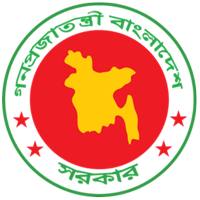Mapping Every Child: How Bangladesh Is Digitally Transforming Immunisation Through GIS
In the heart of Bangladesh’s vibrant cities and rural communities, a quiet digital revolution is reshaping how vaccines reach every child. With the introduction of Geo-enabled Digital Microplanning (GDMP), Bangladesh is taking a bold leap toward precision public health — ensuring that no child remains unvaccinated or under-immunised.
Since the launch of the Expanded Programme on Immunization (EPI) in 1979, Bangladesh’s journey has been remarkable. From a mere 2% full immunisation coverage in its early years to more than 60% by 1990, the country’s commitment to protecting children has only deepened. The government’s Reach Every District (RED) strategy in 2003 and its evolution to Reach Every Community (REC) in 2017 marked key milestones in expanding vaccine access. Yet, traditional microplanning using paper-based maps left gaps — especially in identifying remote populations and unserved areas.
To bridge these gaps, the World Health Organization (WHO), in coordination with Bangladesh’s National EPI and the Management Information System (MIS), introduced Geo-enabled Digital Microplanning using Geographic Information Systems (GIS). Built on the ArcGIS platform, this innovative tool is transforming how vaccination teams plan, monitor, and deliver services. The GDMP initiative enables:
- Mapping of vaccination sites and catchment areas to visualise coverage gaps;
- Identification of unvaccinated and under-vaccinated children;
- Travel distance and time analysis for hard-to-reach populations;
- Monitoring of vaccine-preventable diseases (VPDs), AEFI, and service performance;
- Tracking of health worker alerts and supervision visits;
- Real-time visualisation through interactive dashboards.
Following a successful pilot in 2023 across four regions, including Rajshahi and Mymensingh City Corporations, the system is now scaling up to 29 districts and 4 city corporations. A live dashboard hosted on the Directorate General of Health Services (DGHS) portal allows policymakers to track coverage progress and take data-driven action instantly.
At the field level, EPI data — from BCG, DPT, Pentavalent, OPV, PCV, and MR vaccines — is recorded on paper during sessions, then digitised into a centralised platform. The integration of GIS now adds a visual layer, turning raw data into actionable insights. This approach helps ensure that every household, from city slums to river islands, is accurately mapped and included in vaccination plans. And the benefits are already visible:
- Improved decision-making through spatial analytics;
- Optimised logistics and workforce allocation;
- Real-time monitoring of immunisation gaps and outbreaks;
- Clear communication of progress through visual dashboards.
WHO, in partnership with UNICEF, PATH, and HiSP, continues to strengthen the system through training, monitoring, and the integration of new technologies. “By embracing GIS, Bangladesh is redefining how health equity is achieved,” said a WHO representative. “It’s not just data — it’s a map of opportunity.”
As the country strives toward zero-dose (ZD) and under-immunised (UI) reduction, geo-enabled microplanning ensures that no community is invisible. Through this innovation, Bangladesh stands as a global example of how digital transformation can drive universal immunisation — one mapped community at a time.
Reference:
Geo-enabled digital microplanning: revolutionizing immunization in Bangladesh. Technet-21.org. [cited 2025 Oct 19]. Available from: https://www.technet-21.org/en/community/blogs-newsletters/geo-enabled-digital-microplanning-revolutionizing-immunization-in-bangladesh?layout=listings









